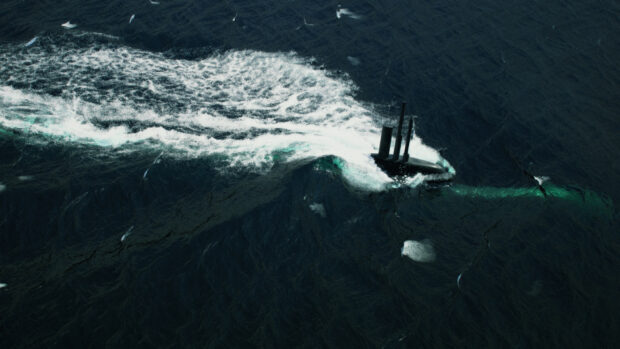What Sweden’s submarines bring to Nato

An undated artist’s rendition depicts the A26 submarine preparing to dive. Saab AB/Handout via REUTERS
KARLSKRONA, Sweden — When Sweden joins Nato, it will help the alliance redress its vulnerability in northwest Europe – the Baltic Sea, a shared waterway with Russia with a bottleneck for access to ports in eight states including Germany.
Sweden’s key to keeping the waters navigable in a conflict is its world-leading submarine fleet, which analysts say holds some of the most advanced conventional submarines ever built.
“The Swedish submarine fleet is well prepared for this environment and will add greatly to Nato’s overall submarine capabilities in the Baltic,” a Nato official told Reuters.
The shallow Baltic, called a “flooded meadow” by some in marine circles, has an average depth of around 60 meters, making it too shallow for the nuclear-powered submarines that comprise the bulk of Russia’s submarine fleet and all of the U.S navy’s.
Sweden has three advanced Gotland-class submarines and one older model which will be retired when two new design A26 vessels are delivered in 2027 and 2028, giving it five by the end of the decade.
Article continues after this advertisementQ: What makes the Swedes so strong?
Experience. Sweden has been operating submarines in the Baltic since 1904. None of the neighboring countries have been as active underwater as the Swedes.
Article continues after this advertisement“We have regional expertise, which fills a gap, expertise that Nato doesn’t have,” said Submarine Flotilla Commander Fredrik Linden.
The Baltic is also a complex waterway: With lots of rivers feeding it, it has widely varying salinity levels. These change both the buoyancy of a submarine and the way sound travels under water, and it takes local knowledge to navigate successfully.
Sweden’s submarines can stay underwater for weeks.
While submerged, conventional submarines run on battery power. Most need to resurface after a couple of days so their diesel engines can run to recharge the batteries.
But Swedish submarines have liquid oxygen stored in tanks on board to run the diesel engines underwater to recharge the batteries, so they can stay submerged for longer and reduce the risk of detection.
Q: How will they help in future?
In 30 or 40 years or maybe sooner, underwater warfare will likely be autonomous, says Sebastian Bruns, Senior Researcher at the Institute for Security Policy at Kiel University. In anticipation of that, Sweden has two new submarines on order, due to be delivered in 2027 and 2028.
Known as the A26, the SAAB Kockums-built vessels will be bigger and more versatile than the Gotlands and have a unique feature: a 1.5 meter diameter dive-lock, called a multi mission-portal, in the bow.
This will let remotely operated vehicles (ROVs), autonomous vehicles or groups of divers in and out easily. Bruns says that makes the submarine ideal for seabed warfare – for instance the protection or destruction of pipelines or other critical infrastructure on the seabed.
“Seabed warfare is the hottest issue right now in naval circles,” said Bruns, referring to the 2022 explosions that wrecked the Nord Stream gas pipelines that run beneath the Baltic.
ROVs can perform tasks such as retrieving or placing objects on the seabed, scanning large areas, or placing or destroying mines. They can also plunge deeper than regular submarines.